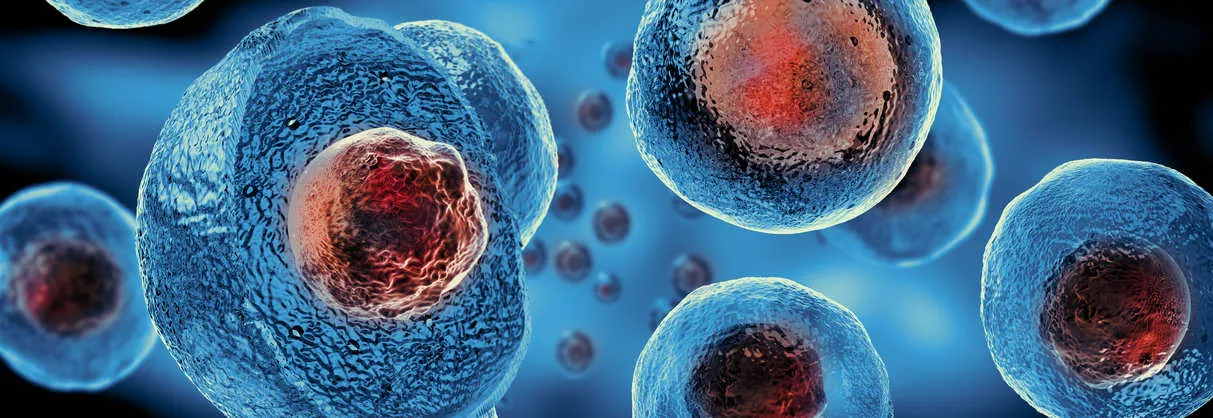Diabetes is characterized by high and persistent levels of blood sugar that occur when certain pancreas cells, beta cells of insulin producers, are destroyed or can no longer secrete insulin.Researchers at the University of Geneva (UNIGE), in Switzerland, have managed to show how part of the Pancreatic Alfa and Delta cells, which generally produce other hormones, can take care of damaged beta cells by beginning to produce insulin.
When observing how these cells manage to modify their function by partially changing their identity, the researchers discovered a phenomenon of unknown cellular plasticity so far.In addition, beyond the pancreas, such processes could characterize many other types of cells in the body.These results, which can be read in 'Nature Cell Biology', lead to imagining completely new therapeutic strategies that could take advantage of the body's regenerative abilities.
The pancreas contains several types of cells that produce different hormones responsible for regulating blood sugar levels.Among them are alpha cells, which produce glucagon, beta cells, which produce insulin, and delta cells, which produce somatostatin, a hormone that acts as a local regulator to control the activity of delta and beta cells.Together, they form small groups known as pancreatic islets.Glucagon increases blood sugar levels, while insulin has the opposite effect.In patients with diabetes, in the absence of functional beta cells, blood sugar levels are persistently high.
In the Faculty of Medicine of UNIGE, Professor Pedro Herrera and his team demonstrated, a few years ago, the existence of a natural capacity to regenerate insulin producing cells: in mice without beta cells, new insulin producing cells appear spontaneously.Some pancreatic cells can be reprogrammed to learn to segregate insulin."However, this phenomenon only affects between 1 and 2 percent of alpha and detla cells. Why do some cells perform this conversion and others do not? And, above all, would it be possible to encourage it? These are the questionsthat constitute the core of our work, "explains Professor Herrera.
A modification of local origin
The scientists first performed gene expression analysis before and after the disappearance of beta cells.They observed, in alpha cells, modifications that seem to go in opposite directions: the overexpression of certain typical genes of insulin producers, but also, and at the same time, that of certain typical genes of the alpha cells of glucagon producers.The normal functioning of alpha cells is linked to the action of insulin, as evidenced by the presence of insulin receptors on its surface.Therefore, alpha cell activity is interrupted when beta cells are destroyed.
But what signal induces cell conversion?To explore different possibilities, researchers transplanted pancreatic islets in normal mice.In transplanted but non -diabetic mice, whose beta cells are still perfectly functional and have no hyperglycemia, some alpha cells of the graft began to produce insulin when beta cells died in transplanted islets.
Consequently, hyperglycemia does not cause alpha cell reallocation.The pancreatic cell environment surrounding the islets is not involved either, since the conversion of alpha cells into grafts occurred in the renal capsule, that is, outside the pancreas.The only explanation is that the reprogramming capacity is intrinsic to the pancreatic islet where they are foundThese cells."Therefore, in the same graft, only the islets without beta cells showed reprogramming. There was no conversion of cells into the neighboring islets that contain all their beta cells," says Herrera.
Other organs may have the same plasticity potential
Continuing with their study, scientists blocked, in non -diabetic mice, the receptors located on the surface of alpha cells to detect the presence of insulin.Some of these alpha cells then began to produce insulin, indicating that insulin itself would act as a brake, preventing the reprogramming of alpha cells.
"By administering an antagonistic drug of insulin, we could increase the number of alpha cells that began to produce insulin was between 1 and 5 percent. In doing so, these cells became hybrids: they changed partially, but not completely their identity, their identity,And the phenomenon was reversible depending on the circumstances that influence cells.
If Professor Herrera's work focuses on pancreatic cells, the same processes could be applied to many other differentiated cells in the body.Therefore, the idea that differentiated functional mature cells remain stable forever is being questioned.
"What we are showing here is that the state of differentiation of a given cell is not carved in stone. Cell identity, at all stages of life, is modulated by the immediate cell environment, particularly by inhibitory signals. Therefore, the maintenance of cell identity is an active process of inhibition throughout the life of the cell, and not an intrinsic or passive state of differentiation.That they are due to mass or inadequate cell death, such as Alzheimer's disease or myocardial infarction, "concludes Professor Herrera.


